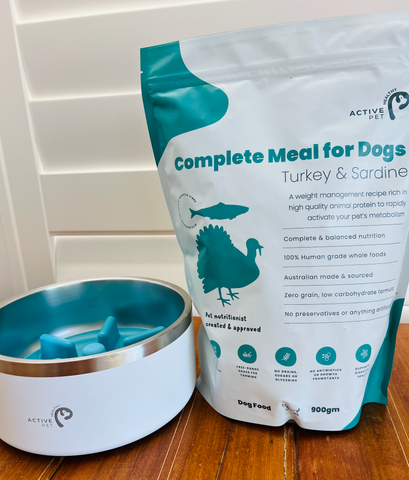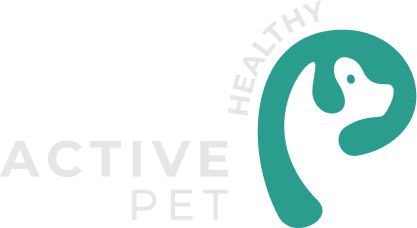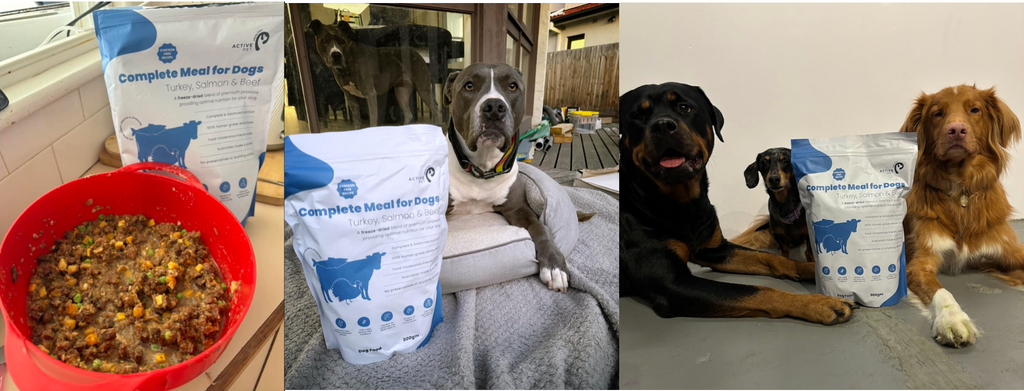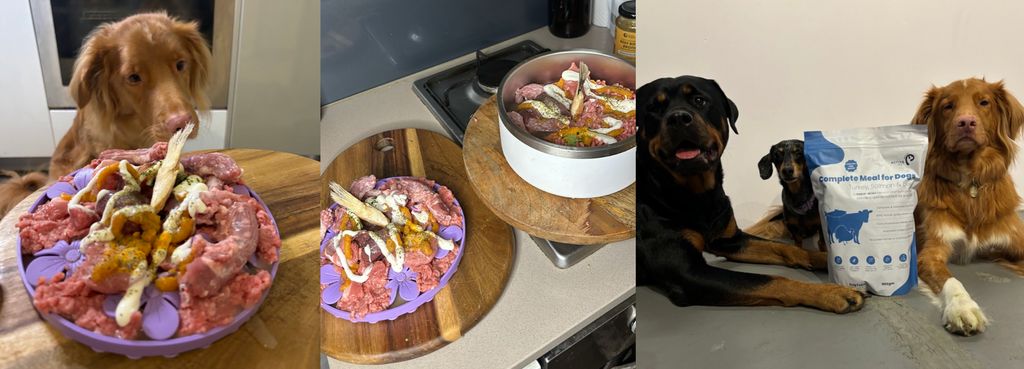
5 ways to help your dog lose weight
Did you know that nearly 50% of dogs in Australia are classed as overweight? Crazy right!
But the good news is that there is lots you can do to ensure they lose the weight and help them to be in their best health possible.

Firstly, you need to determine your dog’s ideal weight to determine their daily caloric needs. You can do this here
Once you have that, you’re ready to start your dog on their weight loss journey!
Step 2: Food
Looking at food consumption is key. How much food are you feeding and how often?
- Pick up that bowl! If your dog is being fed free-choice, meaning the food is always out, pick that bowl up! Dogs will eat when they’re bored, just like people. Switching feeding time to twice daily can keep your furry friend from overeating.
- Feed twice a day. A dog’s stomach empties every 5-8 hours, leaving it empty until the next feeding. When you feed your dog only once per day you may feed too much at one sitting and your pup can get too hungry in between meals, causing them to beg for food or get into the trash looking for something to eat. With smaller, more frequent meals, your dog can work off the calories and energy more efficiently.
- Measure your dog’s food. Overfeeding is easy – too easy. It’s very easy to overestimate the amount of food you’re giving your dog. See here to work out how much food your dog needs
Weight loss food
A good weight loss food is one that has low fat, low calories, high-quality meat protein, a high protein-to-calorie ratio to promote loss of body fat while maintaining muscles, and natural fibre to help dogs feel fuller and have good gastrointestinal health.
Some weight loss foods are made with high carbohydrates used as fillers. These make the foods lower in calories and add fibre to help your dog feel full longer, but it may not mean all your dog’s nutritional needs are being met.
Healthy Active Pet Weight Loss Food
This Turkey & Sardine Complete Healthy Active Pet weight management meal is formulated to be rich in high quality animal protein to rapidly activate your pet’s metabolism and burn more calories while they digest and rest. It is high in protein, low on carbs and has zero fillers. Check it out here
- Active your dogs metabolism to burn more calories
- Complete and balanced nutrition
- 100% Human Grade Organic Whole Foods
- 100% Australian human grade meat
- Australian Made + Sourced
- Nothing artificial. No glycerine, sugars or coatings
- No grains and low carb
- Pet nutritionist created & approved
- 0% preservatives and 0% grain
- Designed to help your dog be healthy and live a long life
- Free from chicken and beef
- Low in sluggish carbs, so your dog will be leaner and livelier in no time at all
- Contain digestive enzymes and prebiotic fibre from carefully selected fruits and vegetables, which support your pet’s gut microbiome for ultimate digestive health and wellbeing

Transitioning to the new food
When you’ve chosen the food your dog will eat, a gradual transition to the new food is essential. If you move your dog from one food to another too quickly, you risk digestive upsets
To properly transition from one food to the other, follow this guideline:
| Transition Days* | Old Food | New Food |
| 1-2 | 75% | 25% |
| 3-4 | 50% | 50% |
| 5-6 | 25% | 75% |
| 7 | 0% | 100% |
Step 3: Treats
Treats should only be 10% of your dog’s daily calorie intake. That means that 90% of your dog’s daily calories should come from a nutritionally balanced diet.
You can see our low calorie freeze dried turkey treats here

Step 4: Ramp up the play!
A good exercise plan is a huge success builder for your dog’s weight loss. Your should get a minimum of 30 minutes of vigorous exercise a day. If a walk is in your routine, make sure it’s brisk enough to burn some calories.
Step 5: Get regular weight checks
Checking your dog’s weight regularly keeps you on the right track with their calories and activity levels. If your dog is losing weight too fast or not losing weight at all, you can adjust the weight loss program accordingly with weight checks every week or two.
Frequent weight checks allow you to make any adjustments needed quickly.
The weight journey involves everyone
Your dog’s weight journey should involve everyone who interacts with them regularly. Explaining the process and providing healthy treats and limits will ensure your dog’s journey is successful.
Find your dog’s body condition score, or do the hand-rib comparison. Once you determine your dog needs to be on a weight loss plan, check with your vet before you start.
As detailed above, here are the five steps to help your dog lose weight:
- Determine your dog’s ideal weight
- Choose a quality, high protein weight loss dog food and calculate your dog’s serving size – there is increased accuracy in measuring food by weighing it on a gram scale vs. using measuring cups. See Healthy Active Pet weight loss food here
- Swap out high calorie, high fat treats with healthy treats. See our low calorie turkey treats here
- Ramp up the play with at least 30 minutes of vigorous exercise per day
- Get weekly or every two weeks weight checks to adjust your dog’s weight loss appropriately.
And if you are looking for a plan to follow which incorporates raw feeding - see our weight loss plan for dogs here




